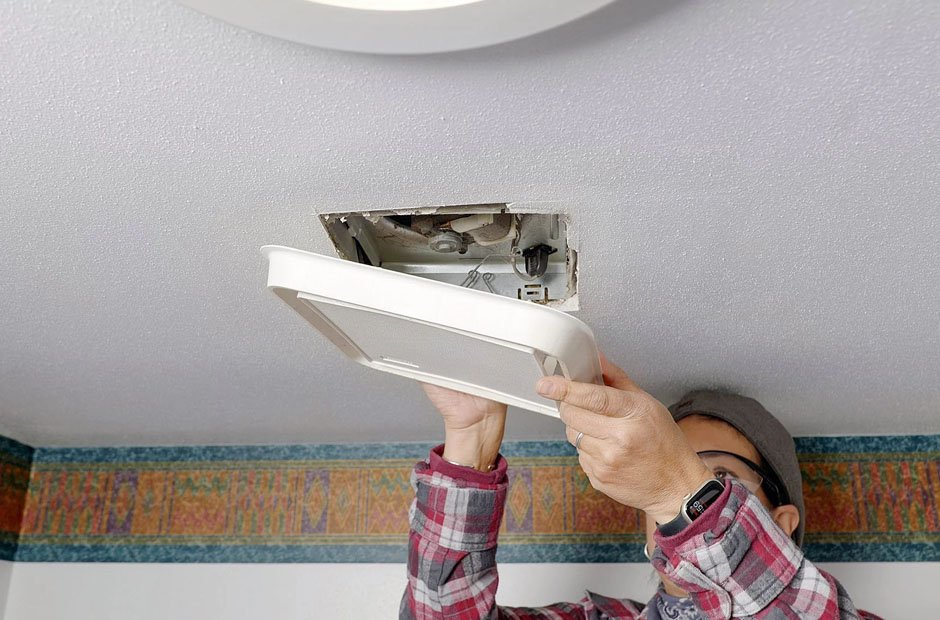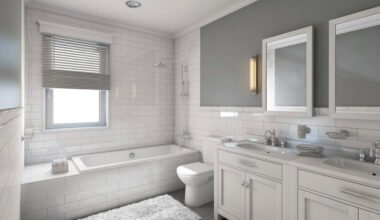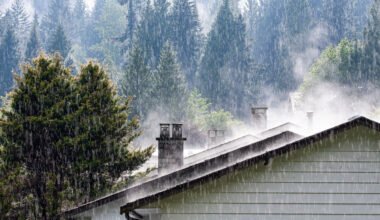It’s easy to keep a homeowner’s maintenance checklist. Change the HVAC filters, clean the gutters, check the smoke detectors. Most people do reasonably well with these things, at least they do them when it’s time, or at least, they know these are things that have to happen. But there’s a list of home dangers that few people ever add to their to-do lists because they’re sneaky, invisible, odorless, or just easy to forget about until it’s too late.
Therefore, instead of getting overly obvious about them with loud noises and glaring problems, they fester over time, causing health degradation, property destruction, and safety threats that few people even realize exist. However, knowing what dangers exist and how to monitor them makes it plausible to fix problems before they get expensive or cause health concerns down the line.
Water Quality Problems
Most people think they have great water quality. It looks good enough, doesn’t smell bad, and in a world of other problems, at least drinking water comes from the tap. But water quality is more than looks and odor. It’s poor pH levels, heavy metals, bacteria, and chemical contamination.
Treatment of water municipal treatment systems helps eliminate many contaminants, but that doesn’t mean proper water treatment exists at every tap. As water travels through pipes from treatment facilities to homes, chemistry changes. Older homes with lead piping result in lead detaining in the water quality systems while well water has no municipal treatment and all responsibility is placed on the homeowner.
Water testing is never a onetime thing when entering a new home. Trusted Water Quality Testers and similar devices allow for periodic testing. This helps catch quality issues over time before health impacts or plumbing systems are compromised. At a minimum, annual testing makes sense, especially after work done on plumbing systems or if someone in the home believes there’s something off.
Acidic water destroys pipes and fixtures as it corrodes materials, creating leaks and requiring replacement of items sooner than expected. Alternatively, alkaline piping results in mineral build up reducing pressure and clogging areas. Both instances cost thousands to fix, and when it’s a home value investment through proper maintenance by assuming costs could lower home value down the line for attentiveness, the decision to prioritize water quality makes obvious sense.
Radon Gas Buildup
The problem with radon is that it is invisible. Radon gas, which comes from the breakdown of uranium in soil and rock, sneaks through homes without detection via cracks in foundations, gaps around pipes, etc.
According to the EPA, radon is the second leading cause of lung cancer after smoking after years of exposure. That’s a serious threat, but few homeowners ever test for radon gas in their homes. Testing takes time and money but it’s not that complicated: short term tests take a couple of days while long term monitors allow for better readings over months.
Even homes next to each other can have vastly different radon levels based solely on soil composition and how well sealed a foundation is over time. A house tested a decade ago with fine readings may not have the same results now as cracks form or seasons change. Testing should occur every few years, especially in basements where levels may be higher.
If levels are elevated, however, mitigation systems allow levels to drop to acceptable amounts. Such systems keep radon below the foundation before entering livable space areas. Although mitigation costs are extensive, they’re worth it for ongoing exposure risk complications.
Carbon Monoxide Dangers
Carbon monoxide detectors are more common than ever before in this modern age, and many building codes require them as well. Unfortunately, it’s not enough just to have one; multiple must be in strategic placements, near exits and beginnings of rooms along with battery operated connections that all work effectively.
Carbon monoxide occurs during partial combustion: gas furnaces and hot water heaters work in tandem with fireplaces and generators while attached garages give vehicles room to idle. However, when ventilation systems fail or combustion isn’t complete, carbon monoxide can rise to dangerous levels very quickly.
They should be on each floor of a home as well as near sleeping areas, not just one located randomly far away. Too often, owners think one will do and allow batteries to die without replacing them, or they simply don’t check for function.
Testing one monthly and replacing them every five to seven years guarantees they actually work when help is needed. Plus, an annual check up by certified technicians for furnaces and hot water heaters takes combustion issues off the table before they even create a problem worth calling emergency services about because those can be fatal.
Mold and Moisture Problems
Plenty of people notice mold by sight on ceilings or walls, but by that time it’s been growing for a while. The real problem comes from hidden mold behind walls or under floors, or up in attics, where moisture problems occur unbeknownst to the homeowner for months or years.
Mold grows from moisture, meaning monitoring humidity levels or checking for leaks can stop mold before it happens. Basements, crawl spaces, attics, and bathrooms are breeding grounds when humidity greater than 60% reaches them while humidity lower than 30% can create wood problems or respiratory issues.
Homeowners should utilize inexpensive humidity meters in problem areas as early warning signs for moisture issues along with the rest of the home that traps humidity; ceilings with stains, musty odors or condensation on windows reflect homes desperate for attention for humidity concerns.
Few people worry about mold but those who do care enough to remediate mold problems down the line, especially with associated health impacts long term exposure can bring about, catching issues early saves money from having to deal with them later.
Electrical System Issues
Thousands of house fires each year start because of electrical problems, but beyond tripped breakers from too much drawing power, many homeowners never inspect their electric systems themselves.
Older wires in homes older than 1970 feature aluminum instead of copper; this expansion differentiates wiring which makes connections loosen over time quicker than anticipated. Older systems may not have enough circuits designed to handle today’s electrical load as overloaded circuits try to draw power all at once, heating up the connections and causing fires along the way.
Areas of concern include flickering lights, burnt components close up from electrical components. All signs warrant immediate inspection from a licensed electrician; an electrician’s inspection every few years, especially for older homes, save problems before they’re complicated nightmares.
Foundation and Structural Shifts
Foundations settle shift, and while this is normal movement over time; excessive settlement or shifting compromises structural integrity.
Cracks in foundations, doors that stick open or closed rarely play nice with windows where floors slope rooms begin separating from others due to unique gaps appearing between walls and ceilings. These are all things most people see but assume they’re fine, the normal settling of a house, but sometimes they’re not fine.
Sometimes they’re problematic, and the longer one waits, the more difficult, and expensive, they’ll be to repair. Structural engineers can evaluate questionable issues but it’s better for peace of mind if people assess whether it’s fine as stable or needs work immediately.
The Inevitability of Invisible Home Hazards
What’s worse about all these problems is that they’re invisible hazards; no one sees radon leaking; no one sees a gradual change in water quality; no one catches an electrical issue from the start before it’s too late. Problems become irredeemable after health impacts occur or no one catches these smaller problems early enough.
Fortunately, proactive inspections and preventative measures require few technical skills or assessments, quick testing mechanisms; periodic professional assessments for cautionary measures; small changes give subtle hints about bigger problems at play. The cost of preventative measures vastly supersedes costs of advanced problems or health issues from environmental hazards that cannot be changed long term.
Therefore, making this a checklist during regular maintenance throughout the year helps protect both people living in these homes as well as the investment itself against more unsightly realities that far too often go unnoticed until it’s too late.



